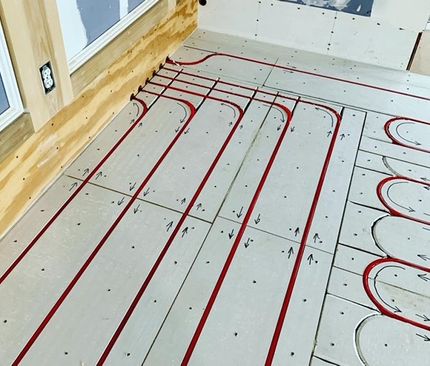


This type of floor heating system heats water using a water heater or boiler and then runs the hot water through pipes that circulate it within the subfloor, then conducted through the top layer of flooring. Radiant floor heating systems have lower energy costs.ģ types of radiant floor heating systems Hydronic Radiant Flooring:.You might not have enough room for the ductwork associated with an HVAC system.A radiant floor heating system is better for those with allergies because there is no forced air to spread pesky or even dangerous allergens.Compared to baseboard heating or forced-air heating, it is more efficient because it doesn’t lose heat through air ducts.Advantages of a radiant floor heating system It’s a system where the heat is introduced into a subfloor, then into and through the top layer of flooring, and finally into the rest of the room and its contents (including people!). It’s effortless to run – a safe heat source that provides added comfort – and relatively easy to install. By utilizing convection mechanisms, radiant heating provides an energy-efficient heat source for your home. They can be expensive to install, but several benefits make them appealing to homeowners. They are also great for large-scale home renovation projects. Just unroll a suitable underlayment like QuietWalk and install QuietWarmth mats over the top.Radiant floor heating systems are a popular construction feature in new home construction. Install floating floor coverings the same day. It is the only floor heating system that can be cut to length with a simple pair of household scissors. Thinner than a credit card, QuietWarmth will not raise the floor height so there is no need for self-levelers or other messy mortars. QuietWarmth radiant floor heating system is ideal way to add even gentle heat to floors in kitchens, bathrooms, family rooms, sunrooms, and new construction.


 0 kommentar(er)
0 kommentar(er)
